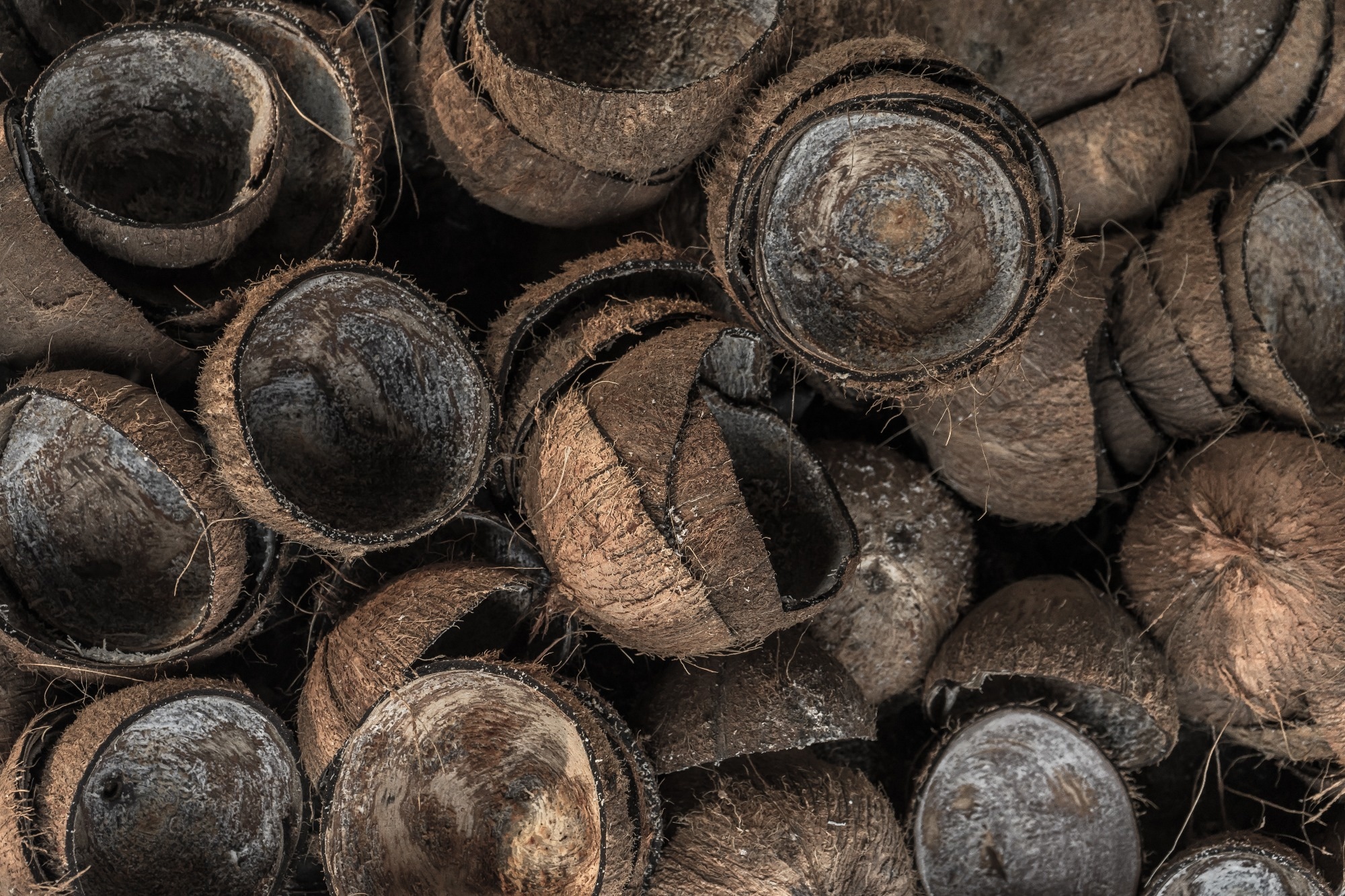Concrete made with coconut shells, corn cobs, and rice husks might sound unconventional, but it could be part of the future of sustainable construction.
 Study: Utilizing Agro-Waste as Aggregate in Cement Composites: A Comprehensive Review of Properties, Global Trends, and Applications. Image Credit: siriphat wandee/Shutterstock.com
Study: Utilizing Agro-Waste as Aggregate in Cement Composites: A Comprehensive Review of Properties, Global Trends, and Applications. Image Credit: siriphat wandee/Shutterstock.com
A recent review article in Materials takes a close look at the use of agricultural waste as aggregate (AWA) in cementitious composites. The study focuses on a variety of organic by-products, including palm kernel shells (PKS), coconut shells, stone fruit pits and shells, hazelnut, peanut and pistachio shells, as well as date and grape seeds, rice husks, corn cobs, and sunflower seed shells. It explores their physical and mechanical properties, and how these materials perform when incorporated into cement-based composites.
Background
Aggregates typically make up 60 % to 80 % of concrete by volume. But with natural aggregate sources dwindling, there’s growing interest in sustainable alternatives. At the same time, agricultural waste is piling up as food production increases, presenting both a disposal problem and a potential opportunity.
Agricultural residues like husks, stalks, cobs, and shells are often discarded after harvest or processing. However, when repurposed as construction materials, these by-products could serve as valuable, renewable inputs - especially as fillers, binders, or lightweight aggregates. This review zeroes in on hard-shelled residues like pits and shells, and evaluates how they influence the physical, mechanical, and durability properties of concrete.
What Makes These Materials Stand Out?
Let’s start with palm kernel shells (PKS), a by-product of oil production. Once crushed, they have angular edges and smooth surfaces. Their specific gravity is much lower than conventional aggregates like granite, which means they absorb more water, but they also offer excellent impact resistance, making them well-suited for certain concrete applications.
Coconut shells, on the other hand, have a rougher surface texture, which can help improve bonding and enhance compressive strength. Meanwhile, fruit pits - such as those from peaches and apricots - are often discarded during food processing. These lightweight, biodegradable materials show potential for use in producing lightweight concrete with a lower environmental impact.
Corn cobs, left over after kernel removal, can also serve a dual role. When shredded into boards, their thermal insulation is comparable to expanded polystyrene. Their moderate density makes them suitable for lightweight concrete formulations.
Rice husks, produced in enormous quantities worldwide, are another promising candidate. Thanks to their silica content and pozzolanic behavior, both rice husks and their ash have a wide range of industrial applications, including construction.
From Lab to Job Site: How They Perform in Concrete
When incorporated into lightweight concrete, PKS requires more fine aggregate than conventional mixes. Despite their irregular shape, PKS concretes maintain good workability with the same water content. PKS can also be blended into asphalt concrete, replacing part of the granite aggregate.
That said, performance varies. The compressive strength of PKS-based mixes depends on several factors: mix design, shell quality, particle size, curing process, and treatment method.
Coconut shells, while similarly effective, present their own challenges. They absorb more water than traditional aggregates, which lowers the effective water–cement ratio. To counteract this, mix designs often call for extra water or chemical admixtures. Still, coconut shell concrete typically segregates less than standard concrete, which is a notable advantage.
Peach and apricot shells have different strengths and weaknesses. Concrete made with these materials tends to have lower tensile and flexural strength and reduced elasticity. However, those drawbacks can be addressed with fiber reinforcements or alternative binders. For instance, lime-based binders have been shown to improve both thermal conductivity and compressive strength.
Comparing materials, lightweight concrete with expanded clay generally offers better insulation and lower density than corn cob concrete, though it suffers from lower compressive strength. Meanwhile, rice husks - particularly in ash form - can partially replace sand in concrete, helping to boost both strength and durability.
What’s the Big Picture?
Using agricultural waste in concrete is more than just a recycling effort - it’s a practical step toward addressing multiple challenges: declining natural resources, rising construction emissions, and mounting waste.
AWA-based concrete doesn’t just help the planet, it also offers functional benefits. Many of these materials enhance thermal and acoustic insulation, and their low density reduces the overall weight of concrete, which can translate to lower transport and labor costs.
But there’s a catch. These materials aren’t uniform. Differences in composition, driven by geography, climate, and processing, can make performance unpredictable. For AWA to become a mainstream solution, consistent quality and standardized testing will be critical.
Journal Reference
Netinger Grubeša, I., Šamec, D., Juradin, S., & Hadzima-Nyarko, M. (2025). Utilizing Agro-Waste as Aggregate in Cement Composites: A Comprehensive Review of Properties, Global Trends, and Applications. Materials, 18(10), 2195. DOI: 10.3390/ma18102195, https://www.mdpi.com/1996-1944/18/10/2195
Disclaimer: The views expressed here are those of the author expressed in their private capacity and do not necessarily represent the views of AZoM.com Limited T/A AZoNetwork the owner and operator of this website. This disclaimer forms part of the Terms and conditions of use of this website.